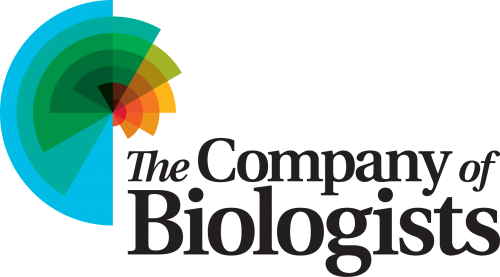Of mice and chicks…
Posted by the Node, on 1 October 2018
This is the latest dispatch  from a recipient of a Development Travelling Fellowship, funded by our publisher The Company of Biologists.
from a recipient of a Development Travelling Fellowship, funded by our publisher The Company of Biologists.
Learn more about the scheme, including how to apply, here, and read more stories from the Fellows here.
Barbara Swierczek
I am a PhD student at the University of Warsaw in Poland. In my home lab, headed by Prof. Maria Anna Ciemerych-Litwinienko, I study the signalling pathways affecting pluripotency and differentiation in mouse embryonic stem cells, focusing on Wnt proteins. Wnts were first described more than 30 years ago, and since then became an intensively studied yet challenging field of cell biology. Why? First of all, there are 19 Wnt proteins found in vertebrates that activate a wide range of signalling pathways. Additionally, they often act antagonistically, creating a complicated and complex network of interactions. Next, Wnts play a key role during development, when their activity is orchestrated in a very precise manner: a defined Wnt has to be expressed at a right moment in a defined place.
It has long been appreciated that Wnts, particularly those dependent on β-catenin transduction (so called ‘canonical’ Wnts), are crucial for gastrulation, the process by which the three germ layers are formed in the embryo. However, despite well-documented function of Wnts in this process, it is not fully understood exactly how these proteins are regulated during gastrulation. Expression of Wnts can be regulated by inhibitors, other Wnts acting antagonistically or miRNAs. The latter are short (approximately 20 nucleotide long) non-coding RNAs, which block the expression of target genes. While studying Wnts and their regulation during mouse embryonic stem cell differentiation I came across some evidence that Wnt signalling can be regulated by miRNAs targeting either Wnts themselves or Wnt receptors or transducers. I found it very interesting and decided to pursue this link further. Also, I wanted to learn how to study this link in a developing embryo.
Around this time, I heard that the The Company of Biologists funds Travelling Fellowships for a short research visit. I decided to give it a go, and applied for three-month long fellowship in the Professor Andrea Münsterberg’s lab at the University of East Anglia in Norwich, Great Britain. Professor Münsterberg is a leading specialist in miRNA functions during development, especially their functions in modulating signalling pathways in skeletal muscle and the heart. During my stay in Norwich I had an opportunity to work on a model organism which was different for me: a chick embryo. Chick is a potent model: in contrast to mammalian development which occurs mostly within the female’s body, chick development can be studied and manipulated easily in the egg, even during later stages of development. Working with a new model was quite a challenge at first, but also an exciting perspective in the same time.
My project concerned the role of miRNAs in regulating Wnt pathway in the gastrulating chick embryo. I focused on Wnt5a, which is a double-faced Wnt: it can bind to different receptors and activate both canonical and noncanonical signalling pathways. I studied the relationship between this Wnt and an miRNA which I selected as a putative regulator as a result of sequence analyses. During my fellowship I learned how to isolate chick embryos and how to manipulate them. Since the group of Professor Münsterberg studies different aspects of chick development, I became familiar with various stages of this process, from gastrulation to more advanced stages. I was able to learn a lot from people in the group: real specialists in working on chick development. Also, I learned a lot about miRNAs and the methods of miRNA analysis which will be beneficial for my future research.
Thanks to my short-term fellowship at UEA, I had a great opportunity to experience an international scientific environment. I enjoyed my stay in Norwich which is not a big city – there are about 100,000 people living there – and for this reason a peaceful and quiet one. Thanks to the Development Travelling Fellowship I was able to learn a lot about the techniques I had not used before, something that encouraged me to seek new challenges for my future research. But what I think is the most important aspect of my visit was making new connections and meeting people working in the field. I wanted to thank once again everyone in the Münsterberg group for helping me – I hope to work with you again!






 (3 votes)
(3 votes)